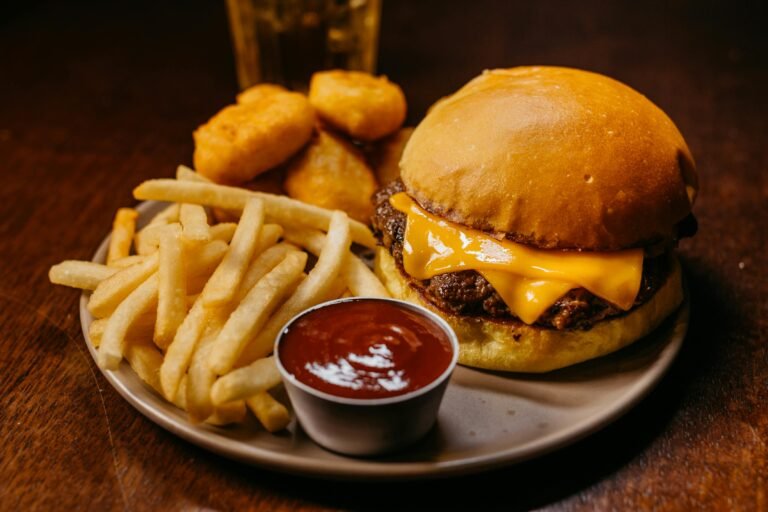Korean food Kimchi (Everything you need to know in 2024)
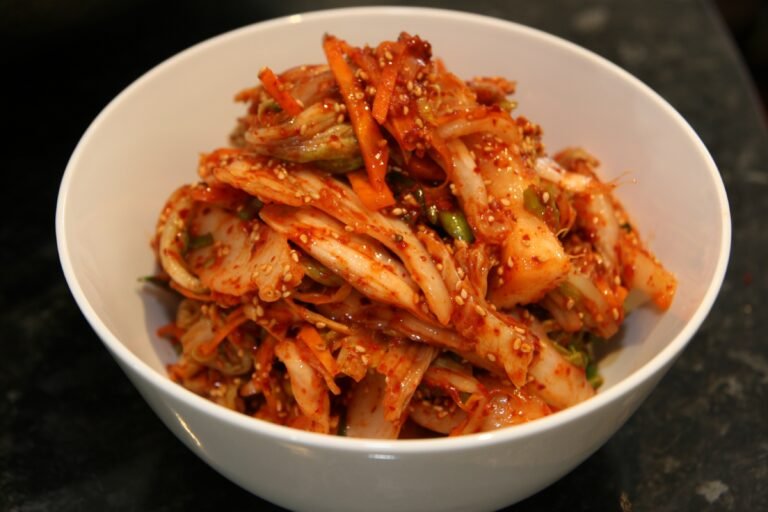
Find out the history behind it, the most popular difference such as Napa Cabbage Kimchi and delicious ways to taste it.
Kimchi is not just a spicy side dish; it is a Korean signature.
Learn the history of the most well-known fermented food, in all its variations and regions of production.
Have you ever wanted to know the secret Kimchi Pancakes recipe?
Table of Contents
ToggleA Long History
Kimchi has a long and exciting history, just like the taste of the dish. Some sources indicate that Koreans ate fermented vegetables as early as the Three Kingdoms period.
At that time, people used kimchi as a formula of food preservation around the winter cold. Later,
Generations have developed more multiple forms of the product, inventing additional elements and spices used as the core part of Korean food, which is now a necessary dish in the Korean diet.
Kimchi (Korean dish)
Kimchi is the soul of Korean food. It is a spicy mixture of fermented vegetables, primarily Napa cabbage, with occasional roots such as radish.
This hard delicacy is jam packed with,
- Chili flakes,
- Garlic and
- Ginger.
It gives rise to and develops its unique sour, salty taste as a result. Moreover, it has completed the holy Korean trinity of taste and color. Kimchi is without doubt Korea’s most well-known cultural product.
Napa cabbage kimchi (Baechu-kimchi)
Napa Cabbage Kimchi , or Baechu-kimchi, is the most well known type of kimchi.
Made of napa cabbage and seasoned with gochugaru for its red hue and spiciness, which can vary depending on how much is used.
Ferment produces an interesting taste sour, wet, and barely spicier making it an addictive and flexible method in Korean cooking.
Have it for its purposes or use it as a hot meal on hot rice or noodles.
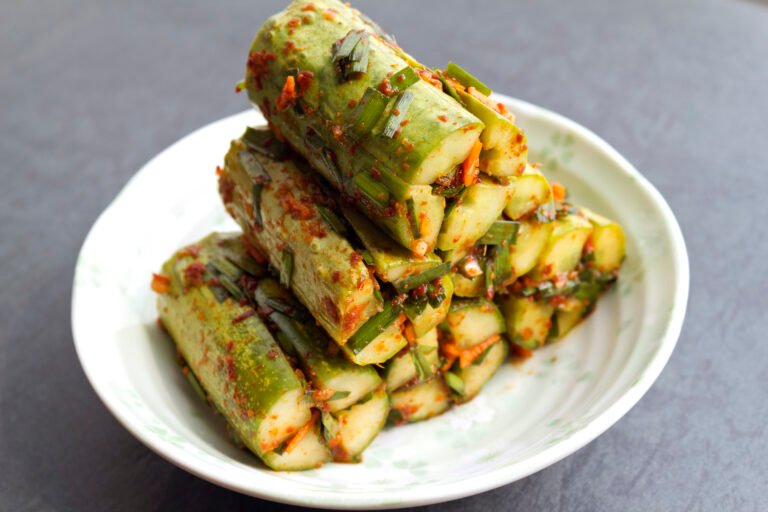
Radish kimchi (Kkakdugi)
Kkakdugi is a different kimchi, known as radish kimchi, since it contains white radish ones diced into extremely tiny cubes.
The seasoning is the same as that for napa cabbage kimchi, but it is much less spicy and crunchier.
The diced radish is fermented quickly, present to the dish with a tang that has been compared to raita but is only a little sweet.
They usually serve Kkakdugi solo as banchan with beef or some rice to provide a cooling crunch.
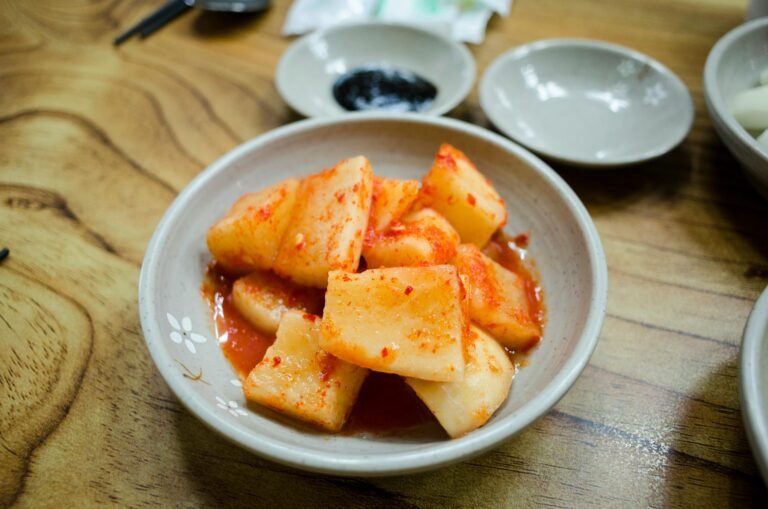
Water kimchi (kimchi-jjigae)
Water Kimchi, known as Kimchi Jjigae sense stew in Korean is a delicious, and warming stew.
It is full of leftover kimchi, vegetables, tofu, pork, and a fiery broth, permitting you to savor the acidic taste of kimchi in a sunlit, tasty dish. Great for lunch or a light dinner.
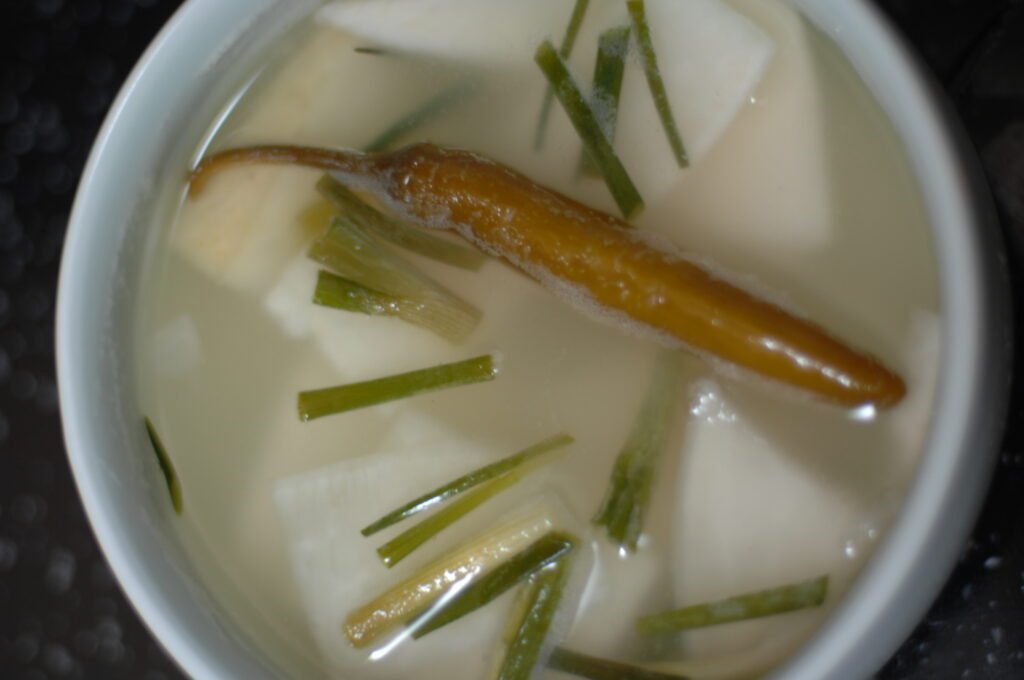
Frequently Ask Questions (FQAs)
When should you not eat kimchi?
It will continue to ferment at a cool temperature. If kimchi over-ferments, it will have a very vinegary odor and taste. It is not pleasant to eat raw, so it is often used for soups and stews. If any fermentation gets soft and slimy, then it is a sign of spoilage.
Can you eat kimchi everyday?
Cabbage and radish kimchi, a popular fermented vegetable dish, in particular were effective in reducing the risk of obesity and abdominal obesity in both men and women.
Do Koreans eat kimchi with everything?
As a traditional side dish, kimchi is usually served with other side dishes (banchan) in Korean family households and restaurants.
What is kimchi? Why is it important in Korea?
Kimchi is the Korean name for preserved vegetables seasoned with spices and fermented seafood. It forms an essential part of Korean meals, transcending class and regional differences.
What do you need to know about kimchi?
An ancient staple of Korean cuisine, kimchi is a fermented mix of vegetables and spices such as cabbage, ginger, mustard greens, garlic, green onion, red pepper, and salt.
Joining me for latest travel news, offers, and events
Stay connected on Instagram

